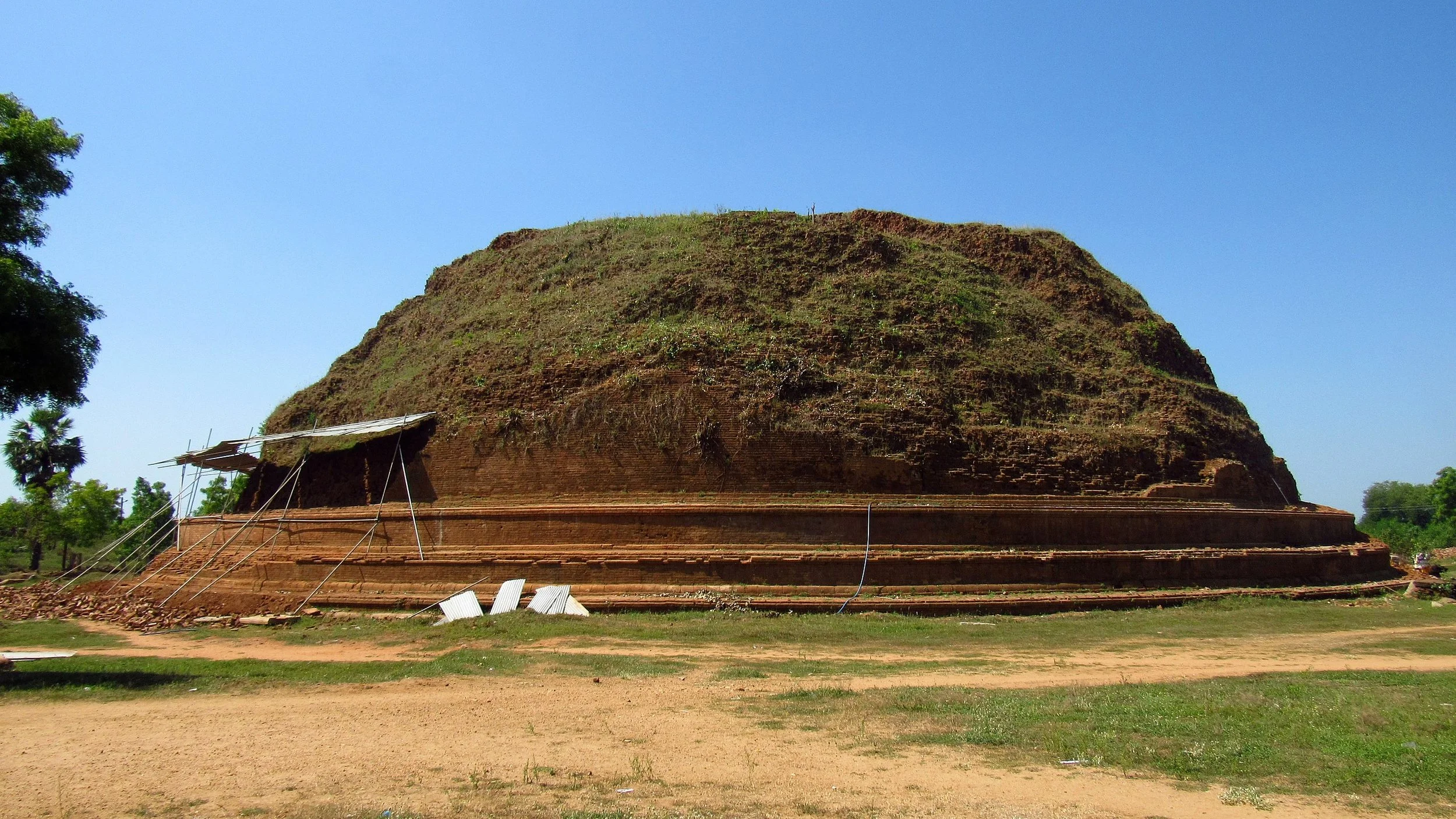Dighavapi (S)
At a Glance
Here, the Buddha and his assembly of monks flew to this supremely serene location and entered into deep samadhi.
The Story
According to the Dipavamsa, after sanctifying the space where the Mahathupa would be constructed, the Buddha and his entourage of accomplished monks then flew on to the location known as Dighavapi (or Deeghawapi) (S) where they once again alit and sat in profound meditation.
One possible etymology of the name Dighavapi comes from the words meaning “long reservoir”. A number of water tanks here represent some of the foremost examples of the hydraulic civilization of ancient Lanka. The surrounding district was an important agricultural area for the Sri Lankan kingdom. King Dutugemunu’s son, Prince Tissa, on his ascension to the throne in 167 BCE sponsored the building of the Dighavapi stupa and Dighavapi vihara. In the chronicles, we read that he and successive rulers established numerous monasteries and stupas in this vicinity. Unfortunately, many of these have been reclaimed by the jungle. But when we visit as pilgrims, we can pause to reflect and visualize the Mahavamsa’s description of stupas covered with webbed coverings, studded with jewels and adorned with golden flowers.
In the last decades, archaeological work around the site has led to the discovery of ancient inscriptions and reliquaries. One particularly notable find was the 2nd century CE gold-leafed inscription on a reliquary casket of King Malutisa (also known as Kanittha Tissa). Four golden caskets were uncovered by excavations at the southern entry of the Dighavapi Stupa in November of 2020. According to the Sri Lankan Department of Archaeology, these date back to the 5th century BCE. Such important treasures not only demonstrate the antiquity of this site, but also remind us that throughout the history of the island, rulers and other important people have had their remains interred in this sacred space.
In 2021, Sri Lankan president Gotabaya Rajapaksa initiated the ‘Deeghawapi Trust Fund’ with the goal to rebuild the stupa and reconstruct the ancient premises. This construction continues at present.
District
Ampara
Province
Eastern Province
Coordinates 07°17′03″N 81°47′12″E

